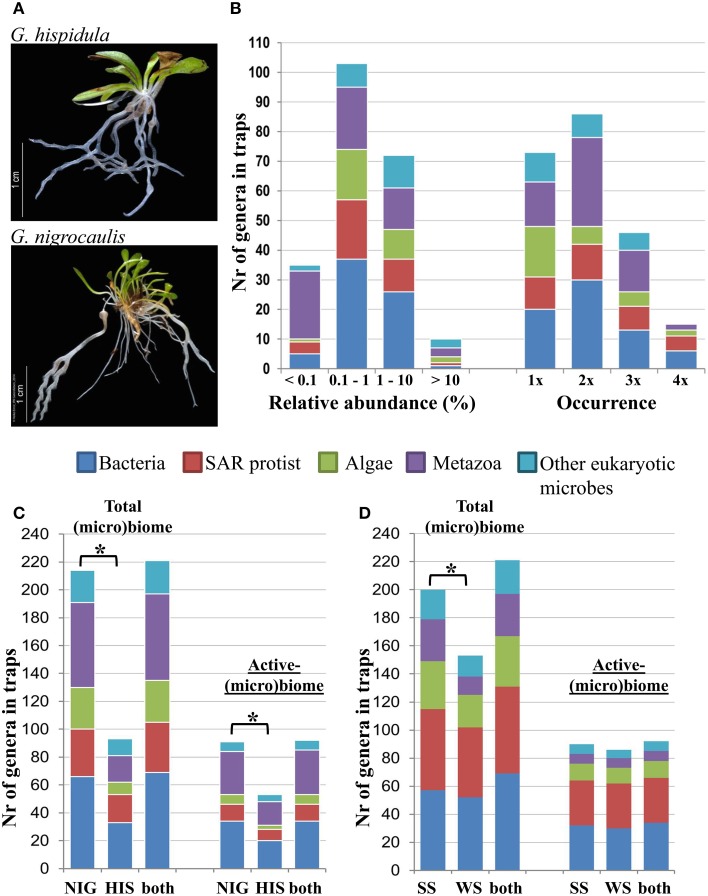Figure 1.
Morphology and (micro)biome composition in Genlisea traps. (A) G. hispidula has only filiform rhizophylls, while G. nigrocaulis displays a trap dimorphism with thick, short-stalked surface traps and filiform, long-stalked deep-soil traps. (B) Relative abundance and occurrence of microbe genera of five categories: bacteria, SAR protists (Stramenopiles, Alveolata, and Rhizaria), metazoans and other eukaryotic microbes. Occurrence reflects the number of times a specific genus is found across the 8 different Genlisea metatranscriptome libraries. (C,D) Number of genera in Genlisea traps according to species (C) or season (D). The active-(micro)biome of Genlisea traps containing preferentially entrapped genera is defined as (i) ≥0.1% relative abundance among each of the five categories; (ii) occurred at least in two trap samples regardless of species or seasonal sampling time; and (iii) trap enrichment with ≥2-fold-change of abundance between traps and leaves. Asterisk indicates significant difference (p < 0.05, paired Student's t-Test). HIS, G. hispidula; NIG, G. nigrocaulis; SS, summer season; WS, winter season.

